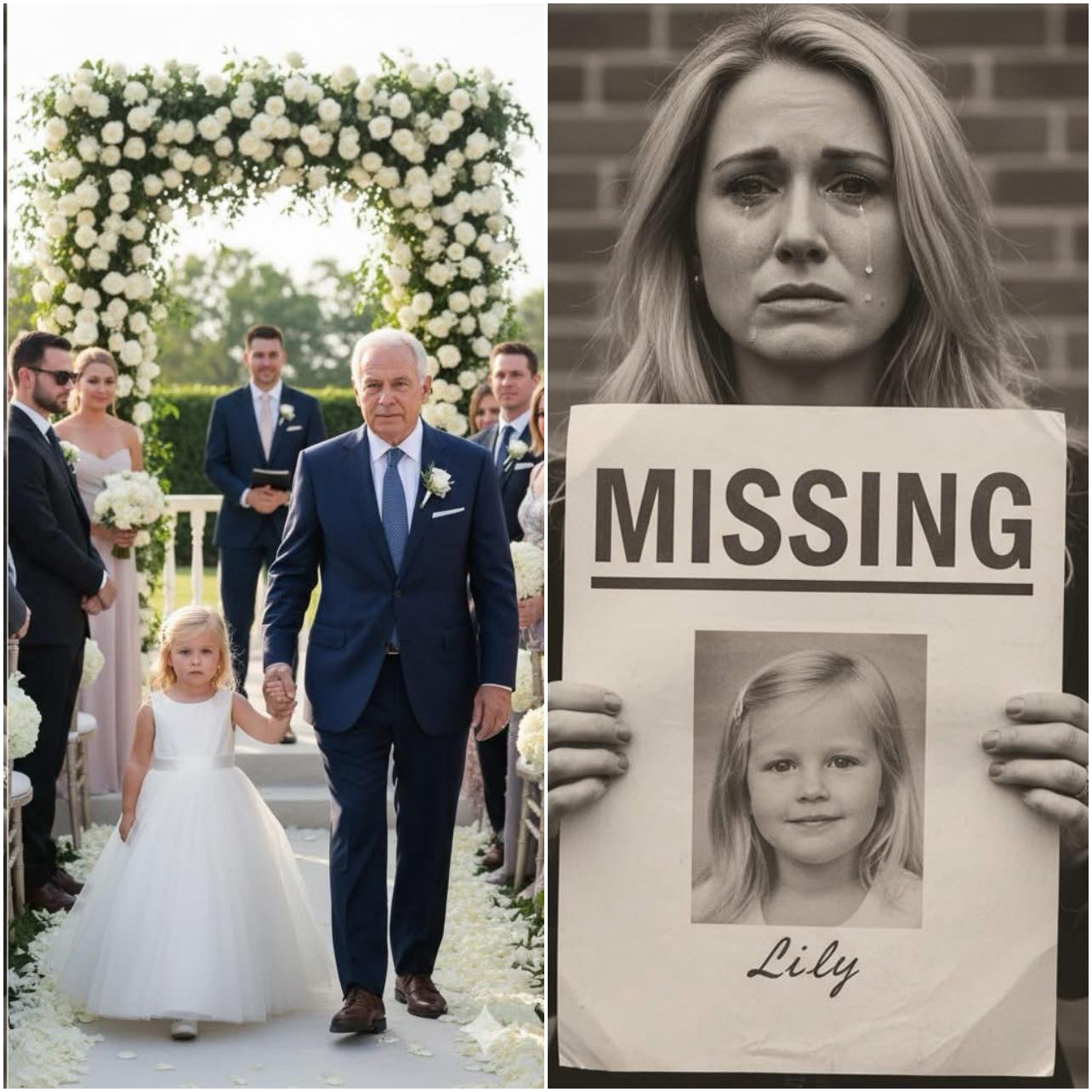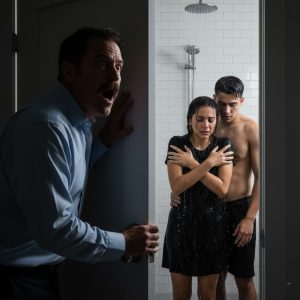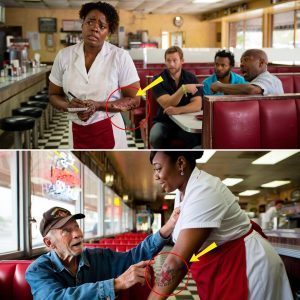Two years after her little girl vanished from a mall restroom, a grieving mother was walking along the beach—when she saw her….The last thing Emily Brooks remembered from that day was the sound of running water and her daughter’s laughter echoing against the tiled walls of the mall restroom. It was a Saturday afternoon in Santa Monica, the kind of day when the Pacific breeze carried the smell of salt and sunscreen all the way into the shopping plaza. Emily had taken seven-year-old Lily for ice cream after piano class, promising they’d look at dresses for her upcoming birthday party. The day had felt ordinary—until it wasn’t.
Inside the restroom, Emily helped Lily wash her sticky hands. For a moment, she turned to grab a paper towel. When she looked back, Lily was gone.
At first, Emily thought her daughter had wandered into a stall. She called her name, laughing nervously. Then the laughter turned to shouting, and the shouting to panic. The security footage later showed Lily stepping out of the restroom door—but what came after was a blur. One camera caught the edge of a man’s sleeve, a baseball cap pulled low. Another camera malfunctioned at the exact moment Lily disappeared into the crowd.
The investigation swallowed Emily’s life. The police questioned every witness, searched the parking lots, even drained a nearby fountain. Two months later, the leads ran cold. The detectives stopped returning her calls. Her husband, Mark, tried to stay strong, but his silence became unbearable. By the following spring, he moved out.
For two years, Emily lived like a ghost—wandering between grief and guilt, haunting the same mall, the same restroom, replaying every detail. She joined online support groups for missing children, kept Lily’s room untouched, her pink backpack still hanging on the door.
Then, one late summer evening, everything changed.
Emily was walking alone along Venice Beach, trying to quiet her thoughts. The sun had melted into a fiery horizon, the air humming with music from nearby bars. She was about to turn back when she noticed a girl playing by the shoreline—a small figure with sand-streaked legs and blond hair tied in a crooked ponytail. The girl was building a sandcastle, humming softly to herself.
Emily froze. That tune—it was the same lullaby she used to sing to Lily every night.
Her heart began to pound so hard it hurt. The child turned her head slightly, revealing a familiar dimple on her left cheek.
Emily’s knees nearly buckled.
“Lily?” she whispered, the name catching in her throat.
The girl looked up.
And smiled…….

Her smile was small, hesitant—almost shy—but it hit Emily like a lightning bolt straight through the heart. The world around her blurred; the laughter from the bars, the crash of waves—all of it faded until there was only that face. That dimple. Those eyes.
“Lily?” Emily gasped again, stumbling forward. Her sandals sank into the wet sand. “Lily, it’s Mommy.”
The girl blinked, uncertain. She took a half-step back.
A man appeared then, striding toward them from a few yards away. He wore a faded denim jacket, his hair silvered by age, sunglasses perched on his head even though the sun had all but vanished. His voice was calm but firm.
“Sweetheart, time to go.”
Emily froze midstep. Her pulse roared in her ears.
“Wait—please—what’s her name?” she stammered, her voice shaking.
The man’s eyes flicked toward her, sharp and assessing. “Her name’s Anna,” he said evenly. “You okay, lady?”
But Emily barely heard him. “Lily,” she whispered again, staring at the girl. “It’s me, baby. It’s Mommy.”
The little girl’s brow furrowed. She looked up at the man. “Daddy?”
The word sliced through Emily.
He reached for the girl’s hand. “Come on, Anna.”
Emily lunged forward. “No, wait!” Her hands trembled as she pulled her phone from her pocket. “Please, just—just let me talk to her. One minute!”
By now, people nearby were watching. A jogger slowed. A couple paused mid-walk. The man stiffened, his grip tightening around the girl’s wrist.
“Ma’am,” he said, his tone suddenly edged, “I don’t know you, and you’re scaring my daughter.”
But Emily couldn’t stop shaking. She’d know that scar on the girl’s left wrist anywhere—tiny, crescent-shaped—from when Lily had fallen off her bike at five.
Her voice cracked. “That scar—how did she get that scar?”
The man went pale. Just for a second.
And Emily saw it. That flicker of fear.
Then he turned on his heel, scooping the girl into his arms and striding fast toward the parking lot.
“Hey!” Emily screamed, sprinting after them. “Someone stop him! He’s taking my daughter!”
The crowd erupted into confusion. Someone shouted to call 911. A lifeguard jumped down from his tower, radio in hand.
The man ran faster, sand spraying behind him. The girl began to cry.
Emily’s lungs burned. She chased until her legs gave out, collapsing into the surf.
The next thing she knew, strong arms were helping her up—police lights flashing red and blue across the sand. Officers swarmed the lot, stopping cars, searching.
Twenty agonizing minutes later, a call came through on the radio: “Suspect located, east end of the boardwalk. Child safe.”
Emily’s heart stopped.
When the officer led the girl back through the crowd, her hair windswept and cheeks streaked with tears, Emily couldn’t breathe.
The little girl looked up, eyes wide, trembling—and whispered, “Mommy?”
Emily broke. She dropped to her knees, sobbing as she pulled her daughter into her arms, clinging to her as if the ocean itself might try to take her away again.
Behind them, the man was being handcuffed beside a black van with out-of-state plates.
Inside the van, detectives later found children’s clothes, fake IDs, and a folder labeled “Project Eden.”
But that night, on the beach where it all ended, Emily didn’t care about evidence or headlines. She only cared that, after two years of nightmares, the sea had finally given her back her child.





